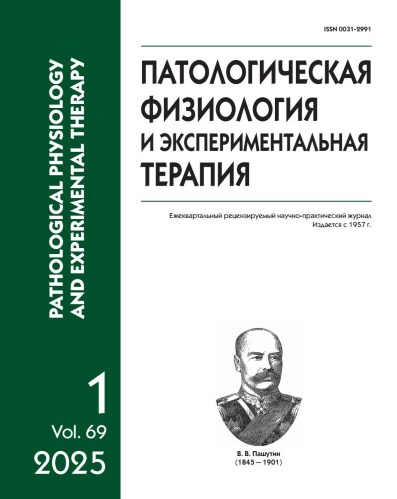Aggregation of the Mutant Alpha-Synuclein Protein (α-Syn A53T) in SH-SY5Y Neuronal Cells: Model Validation
Abstract
Introduction. A common pathogenic event in the development of neurodegenerative diseases is the aggregation of specific proteins in the nervous system. The aggregation of α-synuclein protein is observed in Parkinson’s disease (PD), dementia with Lewy bodies, multiple system atrophy, and other disorders. Based on this, a key direction in the search for potential therapies is the development of anti-aggregation compounds that can prevent aggregate formation or promote the breakdown of existing deposits, thereby halting the progression of the pathological process. To identify and screen such compounds, relatively simple and reproducible test systems are required to assess their efficacy. Cell lines expressing pathogenic forms of human proteins associated with disease development serve as a convenient tool for these purposes.
Objective. To generate and characterize a cellular model of human α-synuclein aggregation based on a genetic construct carrying the pathogenic A53T mutation, which is associated with familial forms of PD.
Methods. Human neuroblastoma SH-SY5Y cells were transfected with a plasmid vector encoding α-synuclein with the A53T mutation, associated with hereditary forms of PD. Protein aggregation was induced by treatment with the proteasome inhibitor MG132. The analysis was performed using fluorescence and confocal microscopy following immunocytochemical staining of the protein in cells. To validate the model, the effect of the neuroprotective compound artemisinin on aggregation dynamics was assessed.
Results. A model of α-synuclein aggregation was established and characterized in human neuronal cells, recapitulating key molecular and cellular features characteristic of synucleinopathies. Protein deposits of various morphological types were formed in the cells, reflecting different stages of aggregation. Inhibition of the ubiquitin-proteasome system function led to a significant increase in aggregation and cell death. The compound artemisinin, known for its neuroprotective properties, reduced the overall number of cells with aggregates by inhibiting the accumulation of early aggregation products.
Conclusion. The developed model system can be utilized for targeted screening of neuroprotective drugs capable of effectively blocking pathological α-synuclein aggregation.






